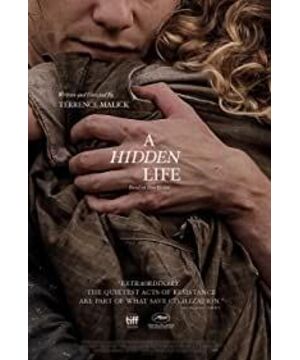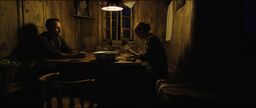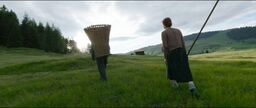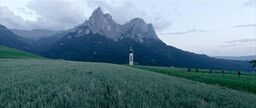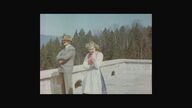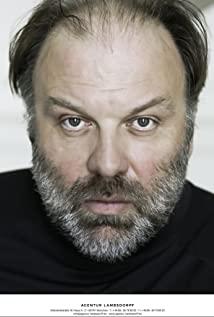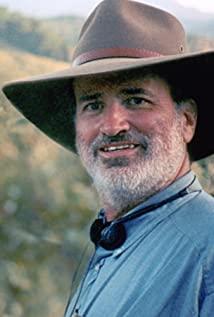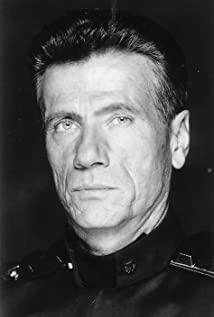There is a director who has not left any photos to the public and the media for decades. He looks like a world-famous person who does not reveal his true face. And every one of his movies has beautiful pictures and inner details. Poetic is famous in the world. He is the legendary American director Terrence Malick.
Malik was born in Illinois in 1943. He grew up on a rural farm and worked as a farmer's helper. In 1965, Malik received a diploma from the Department of Philosophy at Harvard University . Later, he won the Rhodes Scholarship, which belongs to the academic elite, and was able to go to Oxford University to continue studying philosophy, but in the end he did not complete his doctoral dissertation (about Heidegger), reportedly because Malick had a disagreement with his supervisor. After Malik returned to China, he published his own translation of "The Essence of the Basis" (an important philosophical chapter in Heidegger's early period), and taught philosophy at the Massachusetts Institute of Technology.
On the surface, Malik’s life in the first two decades seems to be only related to agriculture (natural) and academic (philosophy) (the brief journalist experience in 1966 is also worth mentioning. He once interviewed the Haitian dictator Duvalier. , And write a report about Che Guevara). But in 1969, Malik unexpectedly became the first master's student of the American Film Academy and successfully obtained a master's degree.
In 1973, Malik filmed "Bad Land" . The film poetically and soothingly presented the desperate journey of a male and female thieves. They escaped into the virgin forest to live, and then fled on the wilderness road until the end. This film is hailed as "the greatest debut of an American director since "Citizen Kane"." Since then, Malik has forged nature and film together, and blended exquisite photography with poetic narration. According to Malik readme, he tried in the film practices with minimalist to create a fairy-tale land of super time , like Treasure Island, deemed dream township. However, this juxtaposition of violent crime and beautiful scenery has also caused a lot of controversy-the film softened the killing to a certain extent. However, I think the best thing about the film is that it highlights the unique duality of children-both innocence and cruelty .
In 1978, Malik's second work "Days in Paradise" came out and won the best director in Cannes. The film focuses on the triangular relationship between a hired worker, a lover and a farmer, and ultimately leads to hopeless wandering and endless escape like the previous work . This film is recognized as one of the most beautiful photography films in history. Photographer Néstor Almendros (Néstor Almendros) used natural light almost all the way, and many scenes were shot at "magic moments" around sunrise and sunset . Whether it is the wheat ears in the autumn, the cumulus clouds covering the sky, or the blue sky and red clouds and the bloody setting sun, they are all beautiful. There are also a lot of silhouettes in the film, as well as bonfires and lanterns at night. This persistent pursuit of pure natural light has almost disappeared in previous American movies-even in the outdoors, there is always too much artificial light. And what really made the film last forever (collected by the National Film Library along with "Evil Land") was the locust plague that swept all over the film, and the fire that ate all the grasslands, like a terrible punishment ("Bible ·The ten plagues of Egypt in the Old Testament include locust plagues).
What is puzzling is that Malik suddenly retired from the film industry in such a beautiful time. From 1979 to 1994, he taught philosophy in France. It took a full twenty years before we saw his third film, the war film "The Thin Red Line", which won the Berlin Golden Bear . The film is based on the U.S. landing on Guadalcanal in 1942 against Japan. In this 20-year-old work, Malik used the narrative technique of stream of consciousness for the first time . The film shows a large number of empty shots of animals and plants in isolated islands and jungles. The Tyndall light and flashback lyrical shots from the cracks of the trees reflect the cruelty of war and the helplessness of soldiers, the primitive natural environment and the motif of life and death. Compose an interactive response. The inner prayers can't resist the appearance of God's absence. Once on the battlefield, everyone can only surrender to luck. No matter how strong a fighter is, his life is as humble and fragile as the beasts, vegetation, and dust in nature. The slow rhythm and excessive monologues of "Thin Red Line" have also been criticized by some critics, but in any case, it refreshed the way of shooting war films and created a new poetic war film style .
Seven years later, Malick’s fourth work "New World" was released and was finally selected as one of the top ten films of the 2000s by the "Cinema Manual". This is a "pre-western film" unique to Malick -the film returns to the North American colonies at the beginning of the 17th century. Through two interracial personal love stories, it reflects the pale and contemptible history of British colonial conquest and pioneering, a new world. The rendezvous and reversal with the old world is reflected in this. The two protagonists from different worlds are entangled in whether to return to the wild/nature, or have to make a choice about integrating into civilization and accepting domestication . The duality of the human individual—the confrontation between nature and civilization is clearly visible here . The gold medal photographer Emmanuel Lubezki ("Gravity", "Birdman", "Wild Hunter") and Malik's cooperation began from then on, and it lasted for five works until "Singing Endlessly".
With "Kubrick's work rhythm", Malik completed the "Tree of Life" in 2011 and won the Cannes Palme d'Or in one fell swoop. This is an unprecedentedly magnificent work. On the one hand, it tells the story of a traditional family in Texas in the 1950s. The protagonist has a resentment towards his strict father, and gradually faces the past in the empty life of adulthood, seeking reconciliation, and Question the meaning of life and the foundation of faith . On the other hand, this film inserts a lot of shots about the formation of the universe, geological evolution and the origin of life. The vicissitudes of life, the vicissitudes of the stars, and the small and perishable individuals need to seek hope in the face of inexhaustible prehistoric times. The film thus links family, life, nature, and religion, and returns to the eternal motif of love and gratitude after going round and round .
Since "The Tree of Life", Malik's filming speed has been much faster than before. Just a year later, "To the Wonderland" landed at the Venice International Film Festival and won the Catholic Culture Award. The film revolves around the love entanglement between two women and one man and a self-doubtful priest. The passiveness and repression of the male protagonist is in sharp contrast with the active pursuit of self-release by the female protagonist. At the same time, the love of mortals and the love of the divine are also discussed at the same time . If most of Malik’s previous works have narratives (the most narrative is "New World", followed by "Days in Heaven" and "Evil Earth") or magnificent and long-term backgrounds ("Thin Red Lines", "Life of Life" Tree"), this film can be said to have thoroughly penetrated into contemporary personal life, into a plotless and stream of consciousness. The editing of the film is extremely fragmented, and the camera moves completely in accordance with the flow of emotion and perception .
From 2015 to 2017, "The Knights of the Holy Grail" and "The Endless Singing" were released one after another. These two unspoken, irrational and logical stream of consciousness works received negative reviews from the public and film critics. According to Malik, "Singing Endlessly" attempts to directly present a fragmented life, a kind of weightless, pursuitless, and soulless movement . I personally think that "Singing Singing" is just a low-profile version of the previous work, and it's not in all aspects. In "The Knights of the Holy Grail", Emmanuel Lubezki’s phantom photography (a large number of wide-angle, fish-eye, pitch, tilt, and pan hand-held lenses) is like a flowing narcotics, which makes people dizzy (psychedelic). The dizziness can even match Spar No’s movie), with the fragmented editing, chattering narration, and slow and holy soundtrack that Malick is good at. The mentality of wandering between indifference and sincerity, indulgence and purification . This is still a movie with a pure observer's perspective. There is no real action, only continuous gaze, no contradictions and conflicts, and it is completely anti-climax.
What needs to be added is that Malik’s working method is also quite unique: he generally does not write detailed and formal scripts before filming (we can also compare Godard and Wong Kar-wai). Malik also likes to shoot a lot of material in advance , and then edit and select. Therefore, his films often take a year or even longer to edit . Another reason is that stream-of-consciousness editing is far different from neat and regular coherent editing. It requires you to enter a specific emotional state in order to proceed smoothly. It does not follow the rules, and naturally it is unpredictable and full of Fortune and chance.
In terms of actors, from "Thin Red Line" to "Singing Endless", Malik has chosen a gorgeous all-star lineup and mixed and matched with amateur actors. Actors’ performances are usually more restrained and subtle, and it is difficult to remember their performances, because most of the emotions and feelings are created by the camera position and movement, editing, soundtrack, and narration.
Between the "Knight of Cups" and "endless song," Malik took years of preparation for the documentary "Time Travel" finally appeared in the world, the film is dedicated to exhaustive age of the Earth and the universe , or at a fixed Malik Slow and stable motion lens to present the wonderful scenery of nature and the origin and evolution of life, and then insert a hand-held DV shot full of noise lens combination to show the life of contemporary people, so as to show the praise and appreciation of life. The reverence of nature, the call for love . But the shortcomings of this work are very obvious: too smooth, smooth, complete, gorgeous, and broad, but it lacks the inevitable breaks in life, and lacks the suffering and pain behind love and light.
However, this development trajectory that left behind complete and coherent characters, orderly plots and narrative logic was interrupted by Malick's new film "The Hidden Life" in 2019 . This work fully and calmly tells the story of an Austrian farmer who resolutely refused to serve Nazi Germany during World War II and finally went to the execution ground. The film is thus able to focus on a very classical theme (like the Greek tragedy of Antigone style): when one's life (even family relatives) and the moral truth in the heart must be chosen, how to choose? He is not longing for the fate of heroes or martyrs, just sticking to the red line of right and wrong in his heart. Those who secretly adhere to their beliefs and die secretly for this are always worthy of our respect.
It is also in "The Hidden Life" that Malik's label-style wide-angle lens, natural light, emotional editing, whispering narration (self-recollection), and spiritual soundtrack blend in with the story very well, and there are elaborate designs that do not leave a trace. Sound and picture separation and rich mixing-in many scenes, seemingly unrelated sounds are mixed into the audio track, and even replaced the realistic sound effects (see the passage of the protagonist being beaten in prison for many times), sometimes far away, sometimes Kindness, sometimes overflowing with the taste of life, and sometimes echoing with divine revelation.
In addition, low-position looking up shots (still wide-angle) can be seen everywhere in the film . This looking up posture, like a pious prayer and worship to God, fits perfectly with the divine breath of the film. We can also compare a large number of low- and elevation-angle lenses in "The Tree of Life". They seem to simulate a child-like perspective. They are both awed and curious. While questioning life and beliefs, they hold a sincere heart of hope. .
Another feature of "The Hidden Life" is a large number of distant shots and symmetrical composition . Doors, windows and light have become key elements, and every lens is faintly calling out divinity (the theological importance of "light" and "passage" can be found in the Bible, such as the third sentence of the opening chapter of "Genesis" "God said:" If there is light, there will be light"; "Luke 13:24 "You must strive to enter the narrow gate"). Whether it is the bright sun in the outdoor empty lens, the corridors and doors in the distant view, the small windows in the prison, the light bulbs on the ceiling of the lonely cell, no matter how humble and helpless, you can still see the penetration The light of suffering, no matter how dark and cruel the fate, there is always that light to illuminate us. The emphasis on light runs through the sequence of Malik's works, just like the large number of backlighting lenses in "The Tree of Life", "To the Wonderland" and "Time Journey" (sunlight seems to be everywhere, always good weather).
A slightly controversial point in "The Hidden Life" is that the main plot-related words in the film are all in English, while the secondary information (such as jailer’s orders, routine statements in court, etc.) or background conversations are switched to German. This can be seen as a pragmatic, after all, the film is Malik the only one not to Americans as the protagonist of the film (in addition to the background of the Guadalcanal landing "thin red line", which is even only Some are not stories that happened in the United States). On the other hand, this approach of switching languages seems to constitute a rhetorical strategy of separation -constantly reminding the audience: Although the film is based on real events, it cannot be separated from fiction after all. Another point that should not be overlooked is that all of Malik’s films are reducing and weakening the status of oral language : the characters in the films are often reticent and focus on the direct perception of foreign objects (this is also what Malik’s works are said by some critics. It is one of the reasons for the "phenomenological image"), or immersed in the inner thoughts; part of the dialogue is sometimes silenced, replaced by the soundtrack or processed environmental sound effects; the narration that continues to reflect on faith and the meaning of life also tends to Close to literary poetic language or philosophical discourse, rather than daily dialogue.
At this point, Malik's basic career path and the main characteristics of his works are roughly clear. Malik created and developed his works in this unique way. Each film combines beautiful visual perception, transcendent philosophical thinking, poetic brushwork and divine light.
First published on the public account [Ice Red Dark Blue Movie], watch great movies together and appreciate classics~
View more about A Hidden Life reviews


